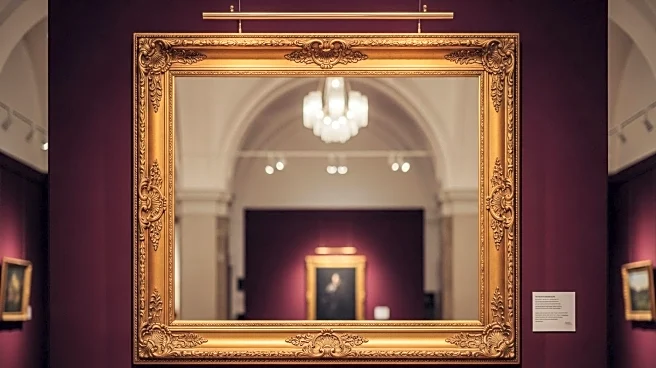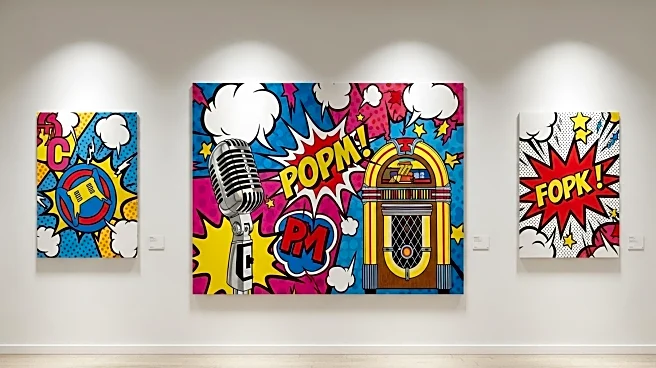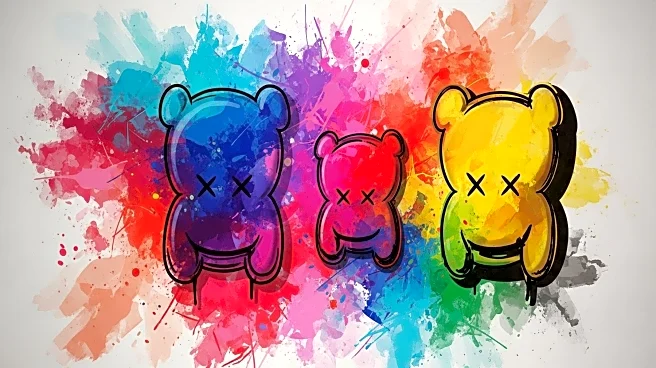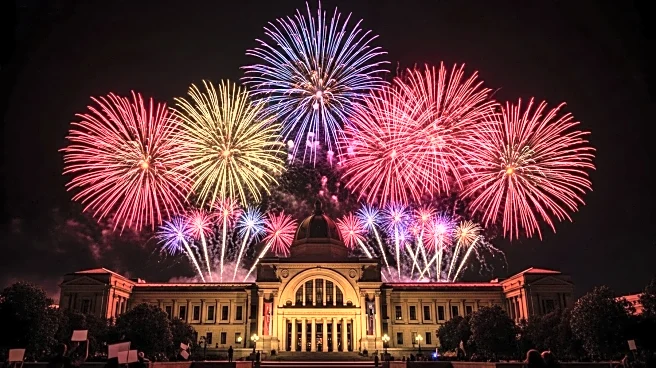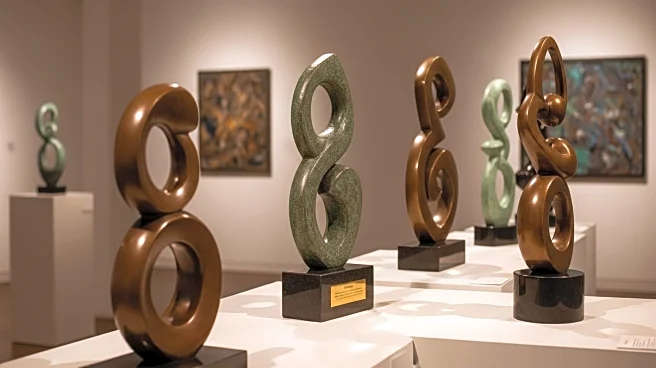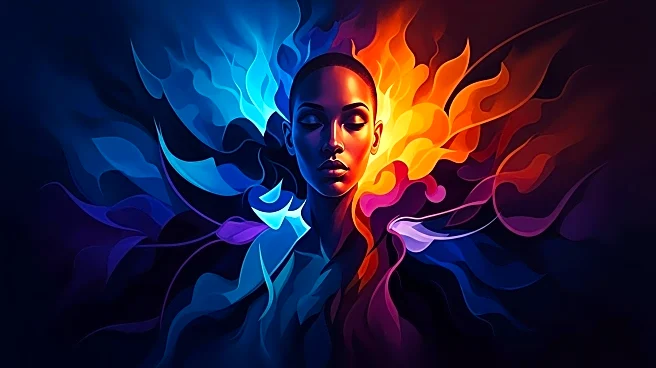What's Happening?
Artist Roger Reyes has unveiled a new exhibition titled 'I See Them Run and Hide, Every Time' at the Grand Central Art Center in Santa Ana. Known for his mural work, Reyes is now presenting a deeply personal installation that explores his experience with colorblindness. The exhibition challenges viewers' perceptions of color through a series of installations using scaffolding, acrylic panels, mirrors, and industrial piping. Reyes, who discovered his colorblindness as a teenager, has reframed this condition as a unique skill, allowing him to develop his own methods for recognizing and working with color. The exhibition is part of Santa Ana's monthly ArtWalk and will be on display until January 1.
Why It's Important?
This exhibition is significant as it highlights the intersection of art and personal experience, offering a unique perspective on color perception. For Reyes, colorblindness has been both a challenge and a source of inspiration, pushing him to innovate in his artistic process. The exhibition not only showcases his personal journey but also invites the audience to reflect on how individual differences shape our understanding of the world. This could influence broader discussions on inclusivity and diversity in the arts, encouraging other artists to embrace and share their unique perspectives.
What's Next?
The exhibition will run through January 1, providing ample opportunity for the public to engage with Reyes' work. As the show progresses, it may spark conversations within the art community about the role of personal challenges in creative expression. Reyes' approach could inspire other artists to explore and share their own unique experiences, potentially leading to more diverse and inclusive art exhibitions in the future.
Beyond the Headlines
Reyes' work also touches on broader themes of perception and reality, questioning how much of what we see is influenced by our individual experiences. This exhibition could lead to further exploration of how artists with different abilities and perspectives contribute to the art world, challenging traditional notions of color and form. It also raises awareness about colorblindness, a condition that affects many but is often overlooked in discussions about accessibility in the arts.


